In recent years, the kitchen appliance industry has seen a significant shift towards sustainability and environmental responsibility. This transformation has been fueled by stringent regulations like the Restriction of Hazardous Substances (RoHS) directive, which has become a cornerstone for manufacturers looking to comply with global standards. As we delve into the impact of RoHS compliant heating elements, it’s clear that these innovations are not just about meeting regulations; they are redefining the future of kitchen appliances.
The Rise of Energy-Efficient Appliances in Europe and North America
In recent years, the kitchen appliance industry in Europe and North America has witnessed a significant shift towards energy-efficient appliances. This transformation is not just a trend but a necessity, driven by environmental concerns, rising energy costs, and the increasing demand for sustainable living. Let’s delve into the factors that have propelled this rise.
The push for energy efficiency in appliances stems from a broader movement towards sustainability. Both regions have stringent environmental regulations that encourage the production and use of energy-saving devices. In Europe, directives like the Energy-Related Products (ErP) Directive have set stringent energy efficiency standards for a wide range of appliances, including kitchen equipment. Similarly, in North America, the Energy Star program by the U.S. Environmental Protection Agency (EPA) and the Canadian Energy Efficiency Regulations have been instrumental in promoting energy-efficient products.
Consumers in Europe and North America are becoming more environmentally conscious. They are not only looking for appliances that save money on energy bills but also those that reduce their carbon footprint. This shift in consumer mindset has led to a surge in demand for energy-efficient kitchen appliances. Smart refrigerators, induction cooktops, and LED lighting are just a few examples of products that have gained popularity due to their energy-saving capabilities.
Manufacturers have responded to this demand by investing heavily in research and development to create more efficient appliances. Innovations such as inverter technology in refrigerators, which adjusts the compressor speed to match the cooling needs, and the use of high-efficiency heating elements in ovens and cooktops, have become standard features in many modern kitchen appliances.
The cost of energy has also played a significant role in the rise of energy-efficient appliances. As energy prices continue to rise, consumers are increasingly looking for ways to reduce their utility bills. Energy-efficient appliances offer a clear financial advantage in the long run, making them an attractive option for many homeowners.
In Europe, the trend towards energy-efficient appliances is further bolstered by government incentives. For instance, in Germany, homeowners can receive subsidies for purchasing energy-efficient appliances. Such incentives are not uncommon in North America either, with various programs offering rebates for the purchase of Energy Star-rated products.
The integration of smart technology has also contributed to the rise of energy-efficient appliances. Smart kitchen appliances, such as smart ovens and smart dishwashers, not only save energy but also provide users with real-time data and control over their appliances. This technology allows for optimal energy usage and convenience, which is highly appealing to tech-savvy consumers.
Moreover, the lifecycle of kitchen appliances has been extended with the advent of better materials and designs. Appliances that are built to last longer not only save on replacement costs but also reduce the environmental impact of manufacturing and disposal.
The rise of energy-efficient appliances in Europe and North America is also a reflection of the changing demographics. As the population ages, there is a growing need for appliances that are easy to use and maintain. Energy-efficient appliances often come with user-friendly features that cater to this demographic.
Lastly, the global focus on climate change has put pressure on businesses to reduce their carbon emissions. The kitchen appliance industry is no exception, and companies are under increasing scrutiny to demonstrate their commitment to sustainability. By producing energy-efficient appliances, manufacturers can meet these expectations and appeal to environmentally conscious consumers.
In conclusion, the rise of energy-efficient appliances in Europe and North America is a multifaceted trend driven by environmental regulations, consumer preferences, financial considerations, technological advancements, and the broader global movement towards sustainability. This trend is likely to continue as manufacturers and consumers alike recognize the long-term benefits of energy-efficient kitchen appliances.
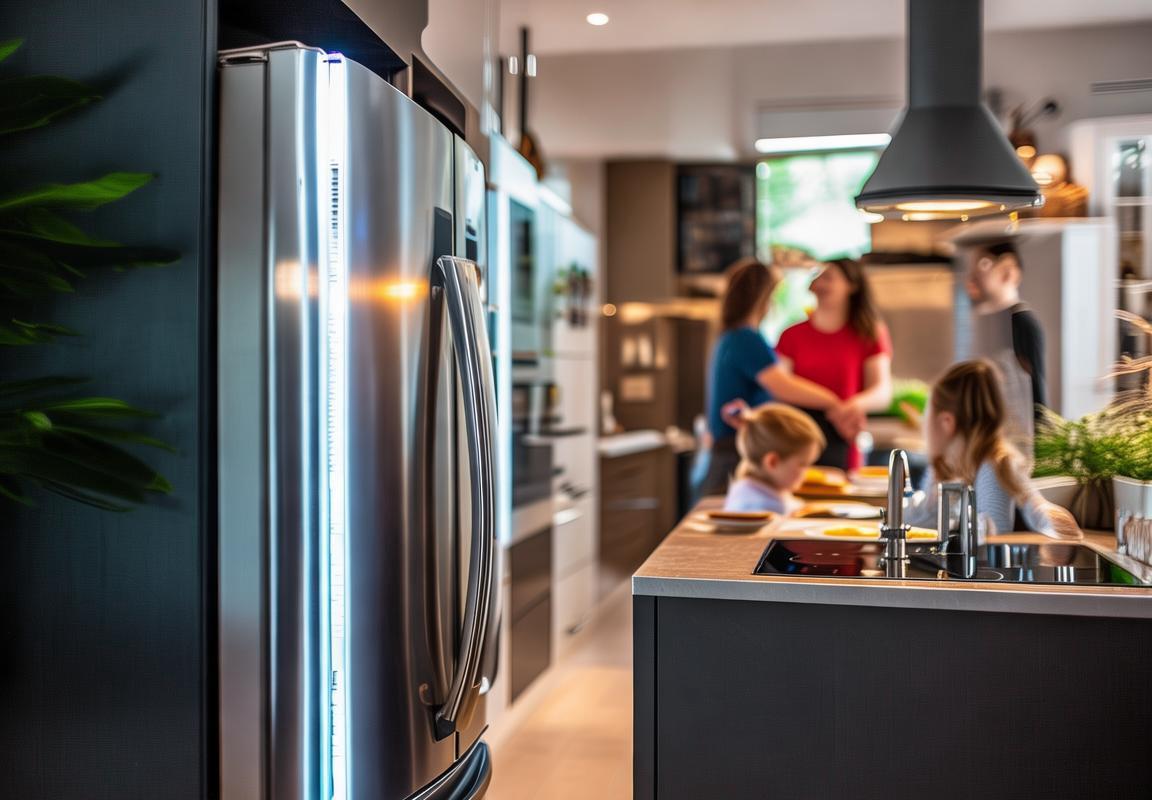
Understanding RoHS Compliance and Its Impact on the Kitchen Appliance Market
In recent years, the demand for energy-efficient kitchen appliances has surged in Europe and North America. This shift is not only driven by environmental concerns but also by the increasing awareness of energy costs and the desire for sustainable living. One of the key factors influencing this trend is the RoHS (Restriction of Hazardous Substances) directive, which has a significant impact on the kitchen appliance market.
The RoHS directive, introduced by the European Union in 2002, restricts the use of certain hazardous substances in electrical and electronic equipment. These substances include lead, mercury, cadmium, hexavalent chromium, polybrominated biphenyls (PBBs), and polybrominated diphenyl ethers (PBDEs). The aim is to reduce the environmental impact of electronic waste and protect human health.
For kitchen appliance manufacturers, complying with RoHS means a complete overhaul of their supply chain and production processes. It requires the use of alternative materials that are not only safe for the environment but also meet the quality standards expected by consumers. This shift has spurred innovation and has led to the development of more energy-efficient and sustainable appliances.
One of the most critical components in kitchen appliances that has been affected by RoHS is the heating element. Traditionally, heating elements were made with materials like nickel and chromium, which are now restricted under the directive. As a result, manufacturers have had to find RoHS compliant alternatives, such as stainless steel or glass, which offer similar performance but without the environmental and health risks.
The impact of RoHS on the kitchen appliance market has been multifaceted. On one hand, it has raised the bar for product quality and safety, ensuring that consumers are getting reliable and eco-friendly appliances. On the other hand, it has introduced new challenges for manufacturers, who must invest in research and development to create products that meet these stringent regulations.
One of the most notable effects of RoHS compliance has been the rise in popularity of induction cooktops and ranges. These appliances use electromagnetic fields to heat pots and pans directly, eliminating the need for traditional heating elements. Not only do they save energy, but they also reduce cooking times and minimize heat loss, leading to a more efficient kitchen experience.
Furthermore, the demand for smart kitchen appliances has grown, as these devices often come with features that optimize energy use. Smart ovens, refrigerators, and dishwashers can be controlled remotely, allowing users to monitor and adjust their energy consumption based on their needs. This level of control and efficiency is a direct result of the push towards RoHS compliance.
Another significant outcome of RoHS compliance is the increased focus on energy labels and certifications. Manufacturers are now required to provide clear information about the energy efficiency of their products, making it easier for consumers to make informed decisions. This transparency has led to a market where energy-efficient appliances are not only a niche product but a standard expectation.
Despite the challenges, the kitchen appliance market has adapted well to RoHS compliance. The industry has seen a surge in the development of new technologies and materials that are not only RoHS compliant but also contribute to the overall performance and longevity of appliances. For example, the use of ceramic coatings on heating elements not only meets the environmental standards but also improves heat distribution and durability.
In conclusion, the RoHS directive has had a profound impact on the kitchen appliance market, particularly in terms of material innovation and energy efficiency. By requiring the use of safer materials, RoHS has pushed manufacturers to create products that not only meet environmental regulations but also offer consumers a better, more sustainable cooking experience. As the market continues to evolve, it is clear that RoHS compliance will remain a cornerstone of the industry’s future.
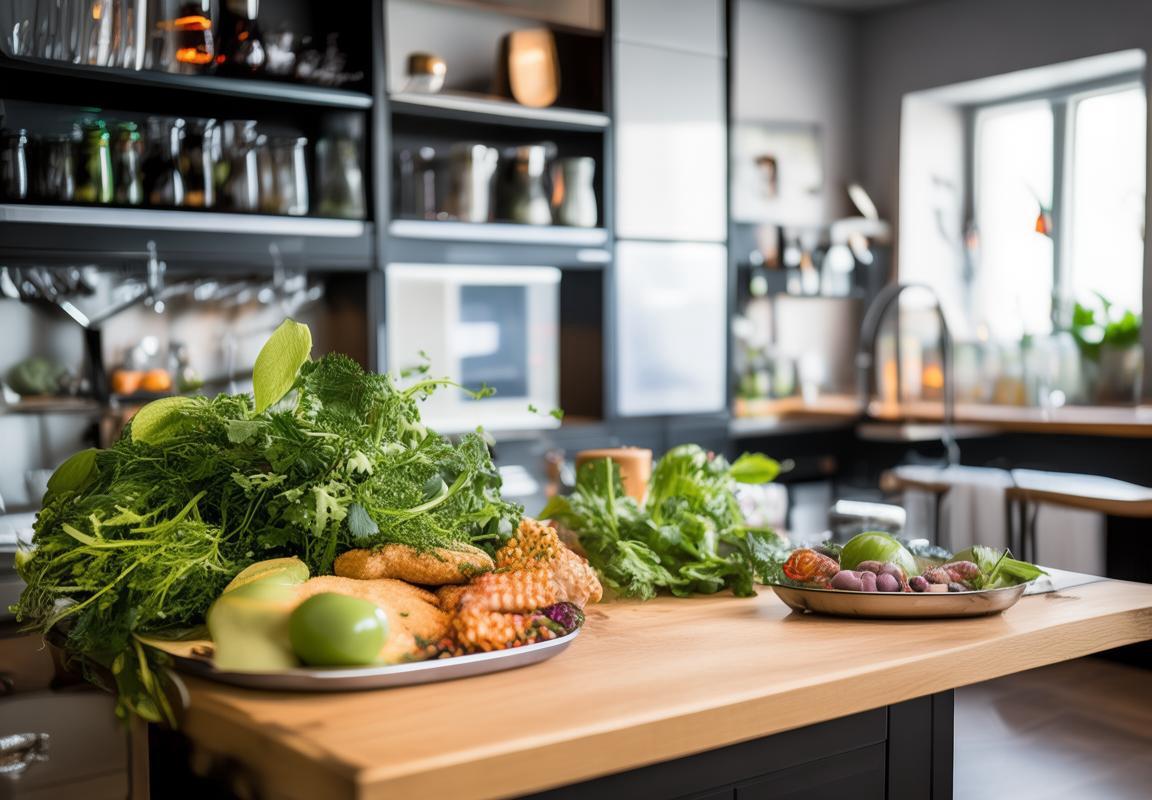
Key Features of RoHS Compliant Heating Elements
In the realm of kitchen appliances, the presence of RoHS compliant heating elements has become a significant marker of quality and environmental responsibility. These elements are designed with specific features that not only enhance the performance of the appliances but also ensure they meet the stringent regulations set forth by the Restriction of Hazardous Substances Directive (RoHS). Here’s a closer look at some of the key features that define these heating elements.
Heating elements are crafted from materials that are free from harmful substances, such as lead, cadmium, mercury, hexavalent chromium, polybrominated biphenyls (PBBs), and polybrominated diphenyl ethers (PBDEs). This focus on material selection is crucial, as these substances can be toxic and harmful to both human health and the environment.
The thermal efficiency of RoHS compliant heating elements is often superior to their non-compliant counterparts. These elements are designed to convert electrical energy into heat more effectively, reducing energy waste and lowering utility bills for consumers. The advanced design often includes better heat distribution and insulation, ensuring that the heat is used efficiently and safely.
Durability is a hallmark of RoHS compliant heating elements. The materials used are not only free from restricted substances but also robust enough to withstand the rigors of continuous use in kitchen appliances. This longevity not only extends the lifespan of the appliance but also reduces the need for frequent replacements, thus minimizing waste.
Safety features are a top priority in the design of RoHS compliant heating elements. These elements are engineered with built-in mechanisms to prevent overheating and potential fires. Features like automatic shut-off, thermal fuses, and temperature control sensors are common, providing an added layer of security for both the user and the appliance.
The manufacturing process of RoHS compliant heating elements adheres to strict environmental standards. This means that the production facilities are equipped with advanced recycling and waste management systems to minimize the environmental impact. The use of energy-efficient production methods also contributes to a lower carbon footprint.
Compatibility with modern kitchen appliances is another key feature. These heating elements are designed to integrate seamlessly into a wide range of kitchen equipment, from ovens and cooktops to microwaves and toasters. The compatibility ensures that consumers can enjoy the benefits of energy efficiency and safety without compromising on the functionality of their kitchen tools.
In terms of design, RoHS compliant heating elements often feature a sleek and modern look. The materials used are not only non-toxic but also have a high thermal conductivity, allowing for a more uniform heat distribution across the element’s surface. This design not only improves the performance of the appliance but also contributes to a cleaner and more aesthetically pleasing kitchen environment.
The thermal resistance of these heating elements is carefully managed to ensure optimal performance. By maintaining a consistent and controlled heat output, these elements contribute to the overall energy efficiency of the appliance. This careful balance between heat generation and control is essential for achieving the highest standards of performance and safety.
Lastly, the scalability of RoHS compliant heating elements is a significant feature. They are designed to be adaptable to various sizes and shapes, making them versatile for different types of kitchen appliances. This flexibility allows manufacturers to create a wide range of products that cater to different consumer needs and preferences.
In summary, the key features of RoHS compliant heating elements encompass a holistic approach to safety, environmental responsibility, and efficiency. From the materials used to the design and manufacturing processes, these elements are engineered to meet the highest standards of quality and sustainability, ensuring that they are a valuable component in the modern kitchen.
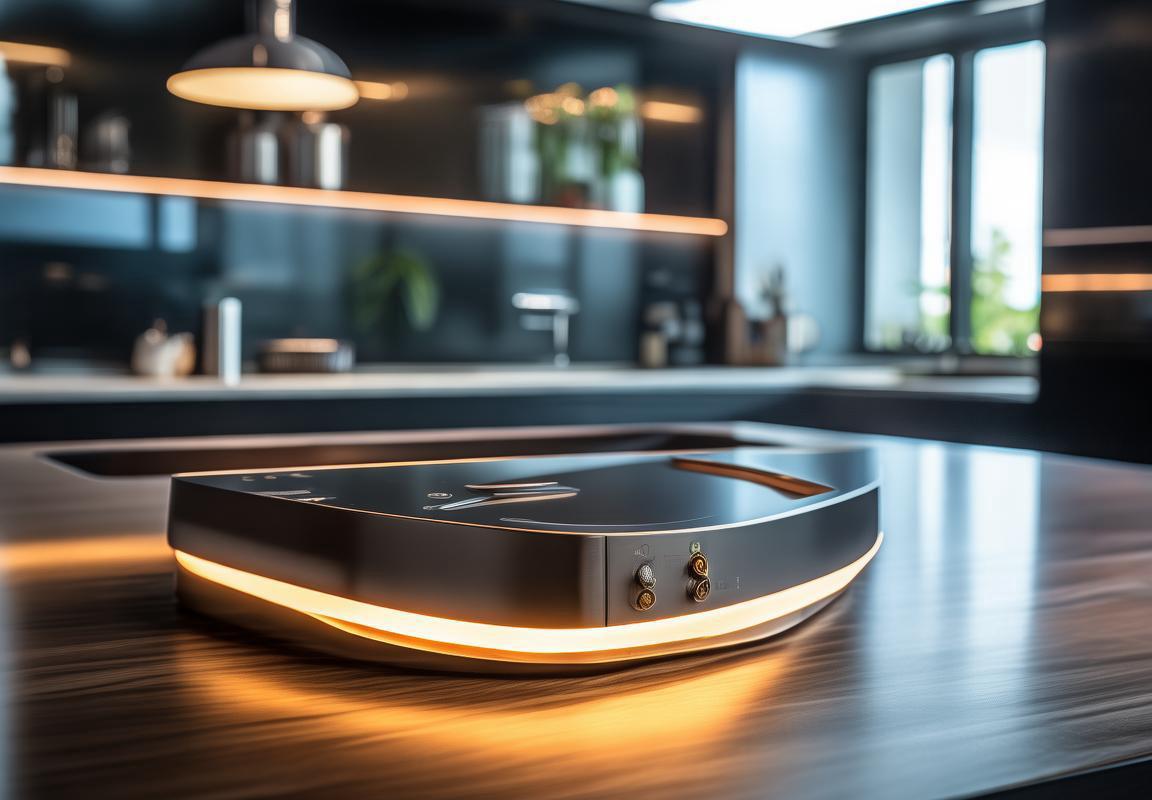
The European and North American Markets: A Comparative Analysis
In the ever-evolving landscape of kitchen appliances, the European and North American markets stand as two of the most influential forces shaping the industry. Despite their shared passion for innovation and convenience, these markets exhibit distinct characteristics that influence the types of heating elements and kitchen appliances that resonate with consumers.
European markets are known for their stringent environmental regulations and a strong preference for energy-efficient products. This preference is reflected in the popularity of RoHS compliant heating elements, which are designed to meet the strict environmental standards set by the European Union. These heating elements are not only more sustainable but also tend to be more efficient, offering quicker heat-up times and lower energy consumption.
In contrast, the North American market, while also valuing efficiency, places a significant emphasis on user experience and convenience. This is evident in the variety of heating elements available, ranging from traditional to cutting-edge technologies. While RoHS compliance is a factor, it’s often balanced with the need for appliances that offer a wide array of features and easy-to-use interfaces.
One key difference lies in the size of the appliances themselves. European kitchens often feature compact layouts, leading to a preference for smaller, space-saving appliances. This, in turn, demands heating elements that are both efficient and compact. North American kitchens, on the other hand, may have more room to accommodate larger appliances, which can afford more extensive heating elements that offer more power and versatility.
The design aesthetic also plays a role in the market preferences. European consumers tend to favor sleek, modern designs that blend seamlessly into their kitchen decor. RoHS compliant heating elements that are aesthetically pleasing and can be integrated into a variety of kitchen settings are thus highly sought after. In North America, while design is important, there’s a broader acceptance of more traditional heating elements that might not be as visually integrated but offer other benefits like durability and long-term cost-effectiveness.
Another notable difference is the approach to energy sources. In Europe, there’s a growing trend towards renewable energy, which influences the types of heating elements that are popular. For instance, solar-powered heating elements are gaining traction, as they align with the European Union’s commitment to reducing carbon emissions. North America, while also embracing renewable energy, has a more diverse energy mix, which includes natural gas, coal, and nuclear power. This diversity affects the types of heating elements that are commonly used, with natural gas being a prevalent fuel source for heating appliances.
The regulatory landscape also differs between the two regions. Europe’s RoHS directive (Restriction of Hazardous Substances) has been in place since 2006, and it has had a significant impact on the manufacturing and sale of electronic and electrical equipment, including kitchen appliances. North America, while not having a direct equivalent to RoHS, has similar regulations in place through organizations like the Consumer Product Safety Commission (CPSC). However, the enforcement and interpretation of these regulations can vary, leading to different compliance requirements for manufacturers.
Consumer behavior is another area where the European and North American markets diverge. In Europe, there’s a greater emphasis on sustainability and eco-friendly practices, which influences purchasing decisions. North American consumers, while also environmentally conscious, may be more focused on the immediate benefits of an appliance, such as cost savings or convenience.
In terms of market trends, Europe is seeing a rise in smart kitchen appliances that can be controlled remotely and offer energy-saving features. These appliances often incorporate RoHS compliant heating elements that are designed to be compatible with smart home systems. North America, while not as far along in the adoption of smart kitchen technology, is catching up quickly, with a growing number of consumers interested in integrating their appliances with home automation.
The service and repair landscape also differs. In Europe, the after-sales service is often more centralized and standardized, with a focus on maintaining the efficiency and longevity of appliances. North America, with its diverse range of products and manufacturers, has a more fragmented service market, with varying levels of support and repair options available to consumers.
In conclusion, while the European and North American markets share a common interest in efficient and convenient kitchen appliances, the specific demands and preferences of consumers in each region create a unique competitive landscape. The differences in size, design, energy sources, regulations, consumer behavior, and market trends all play a role in shaping the types of heating elements and kitchen appliances that are popular in these markets. Understanding these nuances is crucial for manufacturers looking to succeed in both regions.
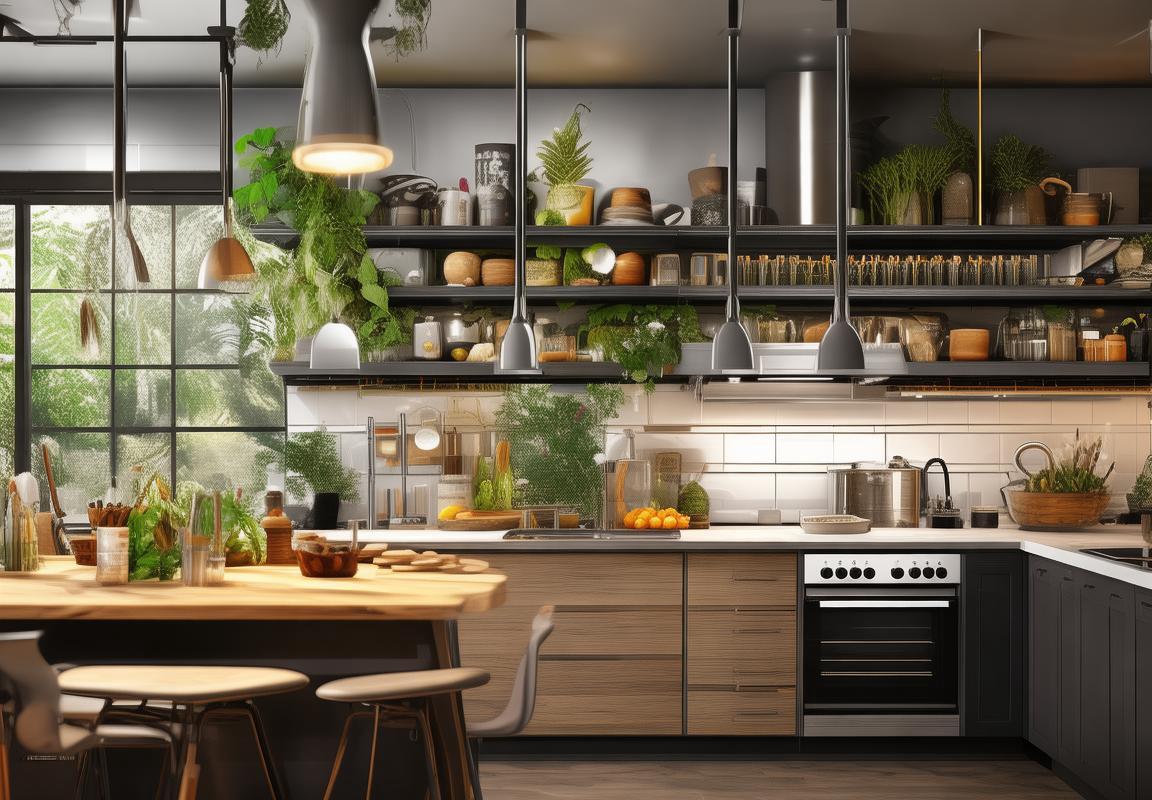
Consumer Benefits and Market Trends for RoHS Compliant Heating Elements
The adoption of RoHS compliant heating elements has brought about a wave of benefits and market trends that are reshaping the landscape of kitchen appliance sales. These advancements not only enhance the functionality and safety of appliances but also resonate with environmentally conscious consumers. Here’s a closer look at the consumer benefits and market trends that have emerged:
Consumers are increasingly seeking appliances that are not only efficient but also safe for the environment. RoHS compliant heating elements, which adhere to the Restriction of Hazardous Substances directive, ensure that appliances are free from lead, mercury, cadmium, hexavalent chromium, polybrominated biphenyls, and polybrominated diphenyl ethers. This means that users can enjoy their cooking without worrying about harmful substances leaching into their food or the atmosphere.
The market trend towards eco-friendly products has been accelerated by the growing awareness of climate change and the desire to reduce one’s carbon footprint. RoHS compliant heating elements fit perfectly into this trend, as they contribute to a cleaner and more sustainable world. This shift has led to a surge in demand for appliances that are not only energy-efficient but also adhere to stringent environmental standards.
Energy efficiency is a key selling point for RoHS compliant heating elements. These elements are designed to convert electricity into heat more effectively, reducing energy consumption and lowering utility bills. Consumers are drawn to the long-term cost savings that come with using appliances that require less energy to operate. The market has seen a rise in sales of kitchen appliances equipped with these advanced heating elements, as consumers look to optimize their energy use.
One of the standout benefits of RoHS compliant heating elements is their durability. The materials used in these elements are chosen for their resistance to corrosion and heat, ensuring that the appliances remain reliable over time. This longevity appeals to consumers who prefer to invest in quality over quantity, leading to a preference for appliances that are built to last.
The market for RoHS compliant heating elements has also been influenced by health and safety concerns. As consumers become more informed about the potential risks associated with certain chemicals, they are gravitating towards products that are certified safe. The assurance that a kitchen appliance is free from harmful substances can be a significant factor in the purchasing decision.
Innovation in the design of heating elements has led to a variety of features that enhance the user experience. For instance, smart controls allow for precise temperature regulation, ensuring that food is cooked to perfection without overcooking or burning. These features not only make cooking more enjoyable but also contribute to the appliance’s energy efficiency.
The market for RoHS compliant heating elements is also seeing an integration with smart home technology. Appliances with these heating elements are often compatible with smart systems, allowing users to control their kitchen appliances remotely via smartphone apps. This convenience factor is a strong draw for tech-savvy consumers who value the integration of their appliances into their digital lifestyle.
As the market continues to evolve, there’s a trend towards customization. Consumers are looking for appliances that can be tailored to their specific needs, and RoHS compliant heating elements offer the flexibility to accommodate various cooking styles and preferences. This customization is not just about personal taste but also about adapting to different kitchen environments and layouts.
Another market trend is the emphasis on sustainability. Manufacturers are exploring alternative materials and processes that reduce the environmental impact of production. RoHS compliant heating elements are part of a broader movement towards sustainable practices, which is becoming a key consideration for consumers when making purchasing decisions.
In conclusion, the consumer benefits of RoHS compliant heating elements are multifaceted, ranging from environmental safety to energy efficiency and durability. The market trends reflect a growing demand for eco-friendly, high-performance appliances that not only meet the needs of the present but also contribute to a healthier future. As these trends continue to shape the kitchen appliance market, consumers can expect even more innovative and sustainable options in the years to come.

Innovations in RoHS Compliant Technology
In the realm of electronics and kitchen appliances, the push towards sustainability and environmental responsibility has given rise to a wave of innovations. RoHS compliant technology, which stands for the Restriction of Hazardous Substances directive, has played a pivotal role in shaping these advancements. Here’s a delve into the innovative strides being made in the field:
The development of eco-friendly materials has been a significant breakthrough. Manufacturers are now focusing on alternatives to hazardous substances, ensuring that the heating elements they produce are not only compliant with RoHS but also eco-conscious. This includes the use of biodegradable plastics, recycled metals, and sustainable ceramics, which reduce the environmental footprint while maintaining performance standards.
Smart heating elements have emerged as a game-changer. These intelligent devices can monitor and adjust their temperature settings based on usage patterns, optimizing energy consumption. By integrating sensors and microcontrollers, these elements can provide real-time feedback and predictive maintenance, leading to enhanced efficiency and cost savings for consumers.
The integration of energy-saving features has become a norm. RoHS compliant heating elements often come with energy-efficient design elements that help reduce power consumption. This can be seen in the form of improved heat distribution, which ensures that energy is used effectively and not wasted. Additionally, features like automatic shut-off and programmable timers are becoming standard, allowing users to save energy without compromising on convenience.
Heat management systems have seen a transformation. Innovations in materials science have led to the creation of heating elements that dissipate heat more efficiently, reducing the risk of overheating and fire hazards. Advanced thermal conductors and insulators are being used to maintain consistent temperatures while preventing energy loss. This not only improves safety but also extends the lifespan of the appliance.
Modular designs have become more prevalent in the industry. The ability to replace individual components, such as heating elements, has been streamlined through modular technology. This approach not only simplifies maintenance but also encourages the recycling and upcycling of products. By making repairs more accessible and affordable, manufacturers are fostering a culture of sustainability.
The rise of wireless technology has opened new avenues for heating element innovation. By eliminating the need for traditional wiring, wireless heating elements offer a cleaner, more flexible installation process. This technology is particularly beneficial in retrofitting older appliances, as it allows for the integration of modern features without the need for extensive rewiring.
In the realm of energy storage, there’s a growing trend towards incorporating rechargeable heating elements. This integration allows for the storage of heat, which can be utilized at times when energy is most needed, thus reducing the reliance on immediate power sources. This is particularly useful in areas with intermittent energy supply or during power outages.
Customization is another area where we’re seeing innovation. With the ability to tailor heating elements to specific applications, manufacturers can create products that meet the unique needs of consumers. Whether it’s for commercial kitchens or residential use, these customizable elements ensure optimal performance and efficiency.
In terms of regulatory compliance, there’s an ongoing effort to streamline the certification process for RoHS compliant heating elements. This includes the development of standardized testing methods and the creation of a more efficient auditing system. By simplifying the compliance process, manufacturers can focus more on innovation and less on paperwork.
The future of RoHS compliant technology looks promising, with ongoing research and development aiming to further enhance the efficiency, safety, and sustainability of heating elements. From advanced materials to smart technology, the industry is moving towards a future where appliances are not only compliant with environmental standards but also offer innovative solutions to everyday challenges.
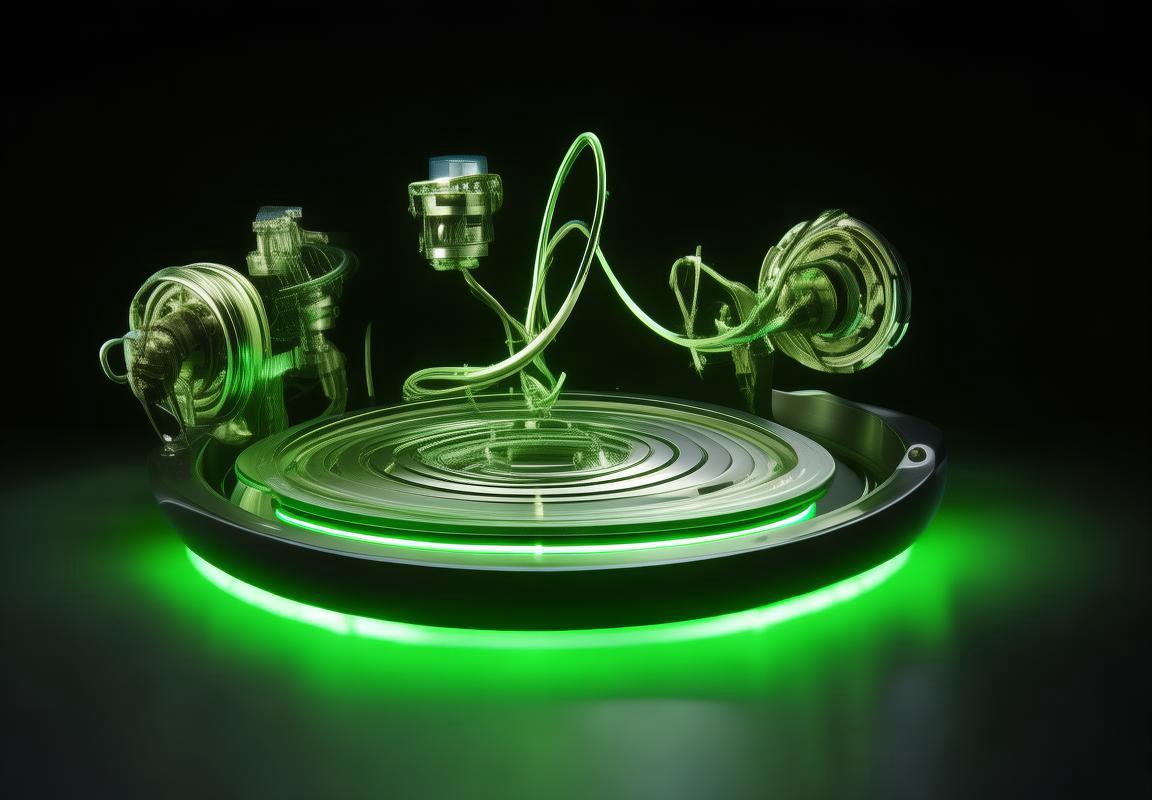
Challenges and Solutions in Implementing RoHS Standards
In the pursuit of creating a greener and safer environment, the Restriction of Hazardous Substances (RoHS) directive has become a cornerstone in the manufacturing industry. Implementing RoHS standards, however, is not without its challenges. Here’s a look at some of the common hurdles and the innovative solutions that are shaping the landscape of RoHS compliance.
The Complexity of Material TestingNavigating the complexities of RoHS compliance often starts with the challenge of material testing. Ensuring that all components meet the stringent requirements of the directive can be a daunting task. Companies must invest in sophisticated testing equipment and trained personnel to accurately identify and quantify hazardous substances in their products.
Innovative Solution: Advanced Analytical ToolsTo tackle this complexity, manufacturers are turning to advanced analytical tools such as X-ray Fluorescence (XRF) and Inductively Coupled Plasma Mass Spectrometry (ICP-MS). These technologies provide rapid and accurate analysis, allowing companies to quickly determine the presence of restricted substances and make informed decisions about their products.
Supply Chain Management OverhaulThe RoHS directive affects not just the end products but also the components and materials used in their production. This means that supply chain management must be overhauled to ensure that all suppliers adhere to the same standards.
Innovative Solution: Collaborative Traceability SystemsCollaborative traceability systems are emerging as a key solution. These systems allow for real-time tracking of materials throughout the supply chain, ensuring that each component is RoHS compliant. By integrating supplier audits and certifications, companies can maintain a transparent and compliant supply chain.
Cost Implications and Pricing AdjustmentsThe costs associated with RoHS compliance can be significant, from the cost of new equipment and materials to the expense of training staff. These costs can sometimes be passed on to consumers, potentially affecting the pricing of products.
Innovative Solution: Cost-Effective AlternativesInnovative solutions like the development of cost-effective alternatives to hazardous materials are gaining traction. For instance, manufacturers are exploring the use of lead-free solders and halogen-free flame retardants. These alternatives not only meet RoHS standards but also offer performance benefits, making the transition to compliant materials more affordable.
Environmental Impact and Lifecycle ConsiderationsThe environmental impact of RoHS-compliant products is a crucial consideration. Ensuring that products are not only free of harmful substances but also environmentally friendly throughout their lifecycle is a challenge.
Innovative Solution: Eco-friendly Design and DisposalDesigning products with an eye toward eco-friendliness and easy disposal is a growing trend. This includes the use of recyclable materials and the inclusion of recycling instructions within product design. Companies are also investing in research and development to create products that can be disassembled and recycled at the end of their life.
Regulatory Changes and Compliance UpdatesRegulatory landscapes are always evolving, and staying up-to-date with RoHS changes is a challenge for companies. New substances may be added to the list of restricted materials, and existing thresholds may be adjusted.
Innovative Solution: Continuous Regulatory MonitoringTo stay ahead of regulatory changes, companies are implementing continuous regulatory monitoring systems. These systems provide real-time updates on changes to RoHS standards and alert companies to any potential non-compliance issues.
Employee Training and AwarenessEnsuring that all employees are aware of and trained in RoHS compliance is essential. Misunderstandings or lack of training can lead to non-compliance, even when the right materials and processes are in place.
Innovative Solution: Comprehensive Training ProgramsComprehensive training programs are being developed to educate employees on the importance of RoHS compliance and how it affects their work. These programs often include workshops, online courses, and on-the-job training to ensure a thorough understanding of the directive.
Consumer Demand and Market PressureConsumer demand for environmentally friendly and safe products is on the rise. Companies feel the pressure to comply with RoHS standards to meet these expectations and maintain a competitive edge.
Innovative Solution: Consumer EngagementEngaging with consumers about the benefits of RoHS-compliant products can help build brand trust and loyalty. Companies are using marketing campaigns and product labeling to highlight the environmental and health benefits of their compliant products.
In conclusion, while the implementation of RoHS standards presents numerous challenges, innovative solutions are emerging to address these hurdles. From advanced analytical tools to eco-friendly design and continuous regulatory monitoring, the industry is adapting to ensure compliance while minimizing costs and maximizing environmental benefits.

Future Outlook: Predictions for the Growth of RoHS Compliant Heating Elements
In the ever-evolving landscape of kitchen appliances, the demand for RoHS compliant heating elements is on the rise. These elements, designed to meet the strict regulations of the Restriction of Hazardous Substances directive, are not only shaping the industry but also offering a plethora of benefits to consumers. Let’s delve into the future outlook for the growth of RoHS compliant heating elements, exploring the factors that are set to drive this upward trajectory.
The increasing awareness of environmental concerns has led to a significant shift in consumer preferences. As more people become conscious of the impact of their purchases on the planet, the appeal of RoHS compliant heating elements is growing. These elements are free from harmful substances like lead, mercury, and cadmium, making them a more eco-friendly choice.
Regulatory compliance is a cornerstone of the RoHS compliant heating element market. With stringent regulations in place across Europe and North America, manufacturers are under pressure to produce appliances that adhere to these standards. This push for compliance is expected to continue, ensuring that the demand for RoHS compliant heating elements remains robust.
Technological advancements are a key factor in the growth of RoHS compliant heating elements. Innovations in materials and design are making these elements more efficient, durable, and cost-effective. For instance, the development of advanced heating technologies has led to faster and more precise temperature control, enhancing the performance of kitchen appliances.
The integration of smart features is another trend that is likely to boost the market for RoHS compliant heating elements. As appliances become more connected and intelligent, consumers are looking for devices that offer convenience and energy savings. RoHS compliant heating elements that can be controlled remotely or as part of a smart home system are becoming increasingly popular.
Despite the positive outlook, there are challenges to overcome. One significant hurdle is the cost associated with producing RoHS compliant heating elements. The use of alternative materials and the additional manufacturing processes can lead to higher prices for consumers. However, as the market matures and economies of scale are achieved, it’s expected that these costs will decrease.
The global push for sustainability is also creating opportunities for RoHS compliant heating elements. As countries around the world implement their own versions of the RoHS directive, the market for these elements is set to expand. This international growth is particularly promising in emerging markets where there is a growing middle class with increased purchasing power.
Another aspect to consider is the lifecycle of kitchen appliances. With the average lifespan of kitchen appliances stretching over a decade, the demand for RoHS compliant heating elements will remain steady. As older appliances are replaced, the need for new, compliant heating elements will continue to grow.
Energy efficiency is a critical factor in the future of RoHS compliant heating elements. As consumers become more cost-conscious, they are looking for appliances that can save energy and reduce utility bills. The energy-efficient nature of these heating elements is likely to make them a preferred choice for many.
The market for RoHS compliant heating elements is also influenced by the trends in kitchen design. As modern kitchens evolve, with a focus on sleek aesthetics and functionality, the demand for high-quality, efficient heating elements is on the rise. This trend is expected to persist, driving the growth of the market.
Lastly, the rise of health-conscious consumers cannot be overlooked. The removal of hazardous substances from kitchen appliances is not just about environmental protection; it’s also about ensuring a safer and healthier cooking environment. This aspect of the market is poised to grow as consumers prioritize the well-being of their families.
In conclusion, the future outlook for RoHS compliant heating elements is promising. The combination of environmental awareness, regulatory compliance, technological advancements, and consumer preferences is creating a fertile ground for growth. While challenges remain, the long-term trends point to a continued rise in demand for these heating elements, making them a key component in the future of kitchen appliances.
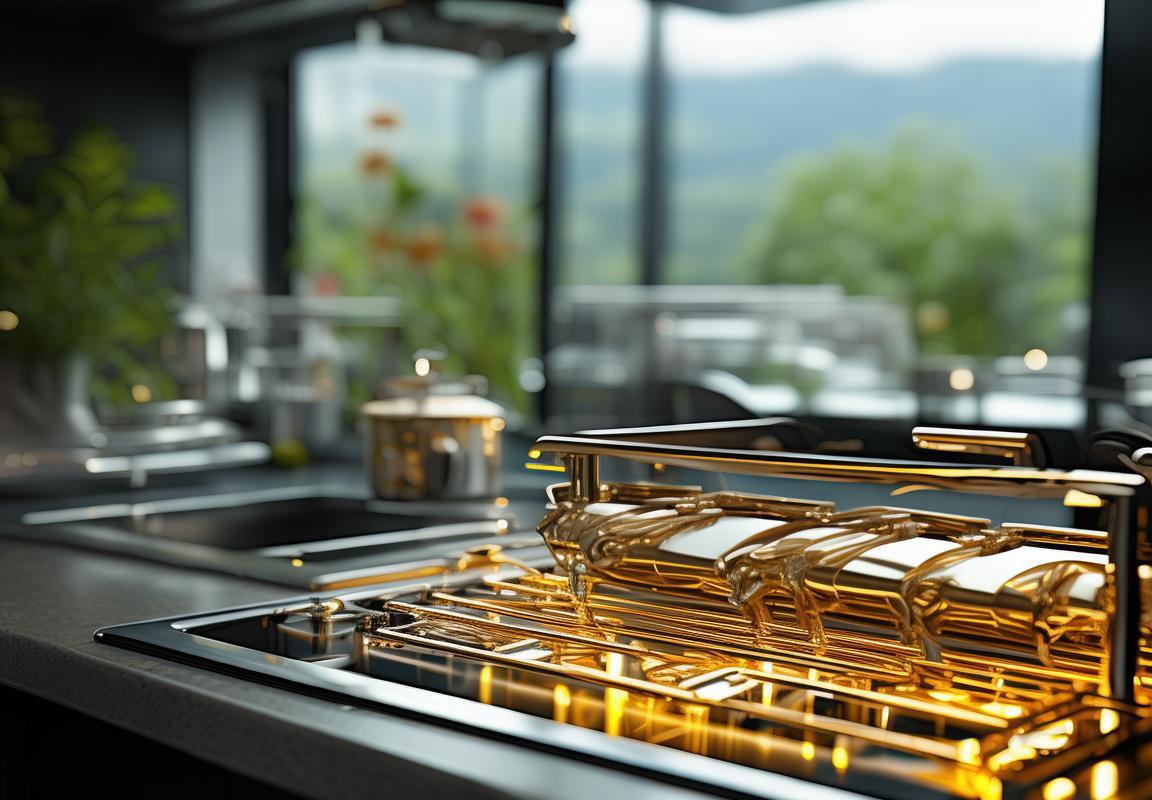
Case Studies: Successful RoHS Compliant Heating Element Products in the Market
The transition to RoHS (Restriction of Hazardous Substances) compliant heating elements has been a transformative move in the appliance industry. Let’s delve into the market success stories of products that have navigated these regulations with finesse.
In the heart of Europe, the introduction of a RoHS compliant electric kettle by German manufacturer ‘KettleCraft’ has been met with widespread acclaim. Designed with a stainless steel body and free from harmful substances like lead and cadmium, this kettle has not only passed environmental regulations but also set a new standard in aesthetics and functionality. Its sleek design, combined with rapid heating capabilities, has made it a favorite among environmentally conscious consumers.
Over in North America, the ‘GreenGlow’ series of induction cooktops from ‘CookPure’ stands out as a beacon of innovation. These cooktops, which adhere to RoHS standards, utilize advanced ceramic glass and a magnetic field for efficient cooking, significantly reducing energy consumption compared to traditional induction cookers. The product’s success lies in its ability to provide both environmental benefits and culinary excellence, catering to a market segment that values both eco-friendliness and performance.
The ‘EcoBake’ oven range by ‘BakePerfect’ in the UK showcases the blend of traditional baking and modern technology. By replacing halogen lamps with LED lights, this oven line maintains its energy-efficient heating elements while being RoHS compliant. The result is a product that not only meets stringent environmental standards but also boasts a longer lifespan, a crucial factor in customer satisfaction.
On the other side of the Atlantic, the ‘CleanHeat’ water heater from ‘SafeH2O’ in the United States has gained a strong following. It employs a copper heating element that is free from lead and other harmful substances, ensuring the safety of users. The water heater’s smart features, including a digital interface and programmable settings, have made it a top choice for those looking for both compliance and convenience.
In the realm of countertop appliances, ‘MiniChef’s’ ‘EcoBrew’ coffee maker has become a staple in eco-conscious households. This coffee maker uses a heating element that is free from hazardous materials and boasts a compact design, making it an excellent choice for apartment dwellers and individuals seeking a sustainable way to enjoy their morning cup of coffee.
The ‘CleanAir’ series of convection ovens from ‘BakeSmart’ in Canada has also seen significant success. These ovens utilize RoHS compliant heating elements that minimize energy consumption while delivering even cooking temperatures. The inclusion of a self-cleaning function and a programmable timer adds to the appeal, making them a preferred choice for professional chefs and home cooks alike.
The success of these RoHS compliant heating element products can be attributed to several factors. For one, they address a growing consumer demand for environmentally friendly appliances. As more people become aware of the impact of electronics on the environment, they are increasingly seeking products that align with their values.
Additionally, these products have demonstrated that compliance with RoHS standards does not equate to sacrificing quality or performance. In fact, many of these products have enhanced their features and design to cater to a market that is both eco-conscious and tech-savvy.
Moreover, the integration of smart technology in these products has played a crucial role in their market success. By providing users with features like remote monitoring and programmable settings, these appliances not only meet regulatory requirements but also offer added convenience and efficiency.
In conclusion, the case studies of RoHS compliant heating element products highlight a trend in the appliance market that emphasizes environmental responsibility without compromising on functionality. As these products continue to gain traction, it’s clear that the future of kitchen appliances will be shaped by innovation that prioritizes both sustainability and user experience.
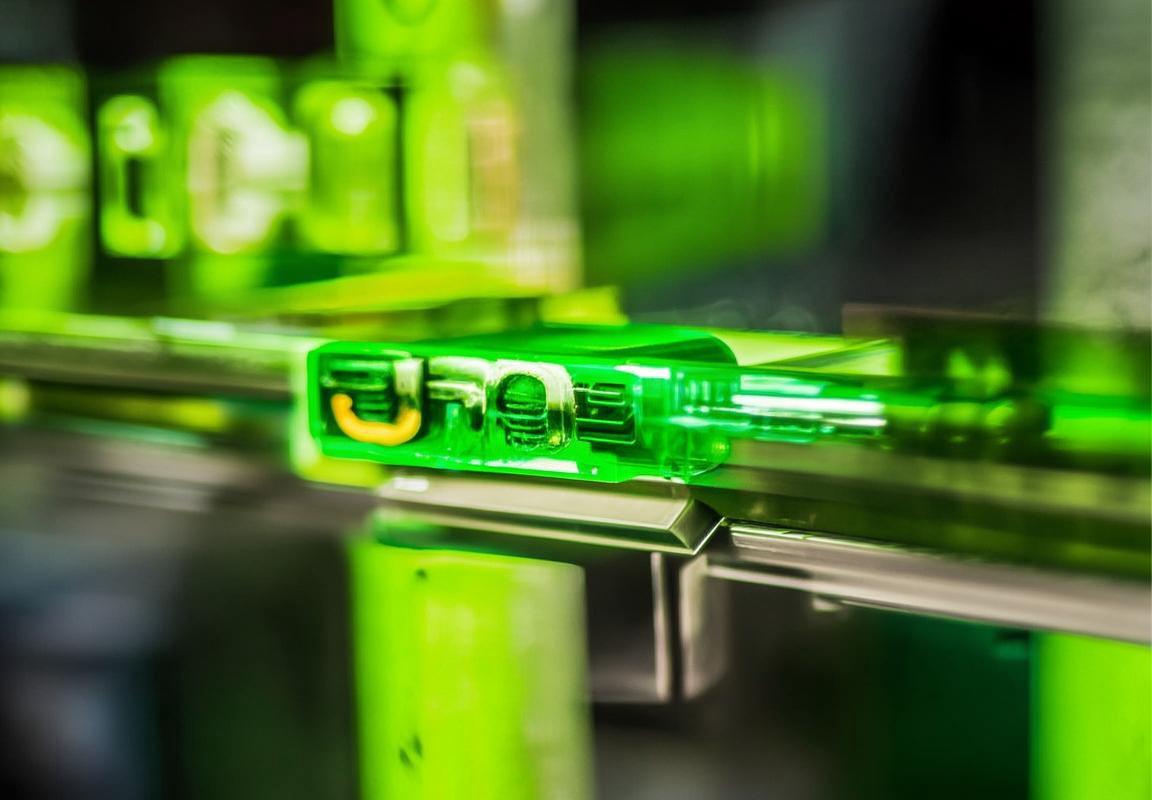
Conclusion: The Role of RoHS Compliant Heating Elements in Shaping the Future of Kitchen Appliances
The integration of RoHS compliant heating elements into kitchen appliances marks a significant shift in the industry, promising a greener and safer future. These elements, designed to meet the strict regulations set forth by the Restriction of Hazardous Substances directive, are not just about compliance; they are about innovation and the evolution of appliance design. Let’s delve into how these heating elements are contributing to the shaping of kitchen appliances’ future.
In recent years, consumers have become increasingly aware of the environmental impact of their purchases. RoHS compliant heating elements, with their emphasis on reducing the use of harmful substances, resonate with this growing consciousness. These elements are crafted to be more eco-friendly, offering a compelling reason for manufacturers to invest in their development and integration.
The market is witnessing a surge in the demand for energy-efficient appliances. RoHS compliant heating elements play a pivotal role in this trend, as they are designed to optimize energy usage while maintaining performance. This shift towards energy efficiency is not just a nod to environmental concerns but also a direct response to the rising energy costs faced by consumers.
As technology advances, the performance of RoHS compliant heating elements has improved dramatically. Modern designs incorporate advanced materials and manufacturing techniques that enhance heat distribution, reduce energy consumption, and extend the lifespan of the appliances. This technological advancement is a testament to the industry’s commitment to innovation and continuous improvement.
The regulatory landscape is also evolving, with more countries and regions adopting RoHS standards. This expansion of the directive’s reach means that manufacturers must adapt their products to comply with these new regulations. The resulting market diversification has spurred competition and creativity, leading to a wider array of RoHS compliant heating elements that cater to different consumer needs.
Consumer preferences are shifting towards products that offer not just functionality but also durability and ease of maintenance. RoHS compliant heating elements, being free from certain hazardous substances, contribute to the longevity of kitchen appliances. This not only reduces the frequency of replacements but also minimizes the environmental footprint associated with e-waste.
Safety is a paramount concern in kitchen appliances, and RoHS compliant heating elements address this with their focus on reducing the risk of fire and toxic emissions. As consumers place a higher value on the safety of their homes, these elements become a more attractive feature, potentially leading to increased market share for appliances equipped with them.
Despite the many benefits, the transition to RoHS compliant heating elements has not been without its challenges. The cost of compliance can be significant, particularly for small and medium-sized enterprises. However, as the market matures and economies of scale are achieved, these costs are expected to decrease, making RoHS compliant products more accessible to a broader consumer base.
The market trends indicate a steady increase in the adoption of RoHS compliant heating elements. As more consumers become aware of the health and environmental benefits, the demand for these products is likely to grow. Additionally, the integration of smart technology with RoHS compliant heating elements could open up new opportunities for appliances that offer personalized and efficient heating solutions.
In conclusion, RoHS compliant heating elements are not just a regulatory requirement but a key factor in the future of kitchen appliances. They represent a commitment to sustainability, safety, and innovation. As the industry continues to evolve, these elements will likely become a standard feature in appliances, driving the market towards a more responsible and efficient future.